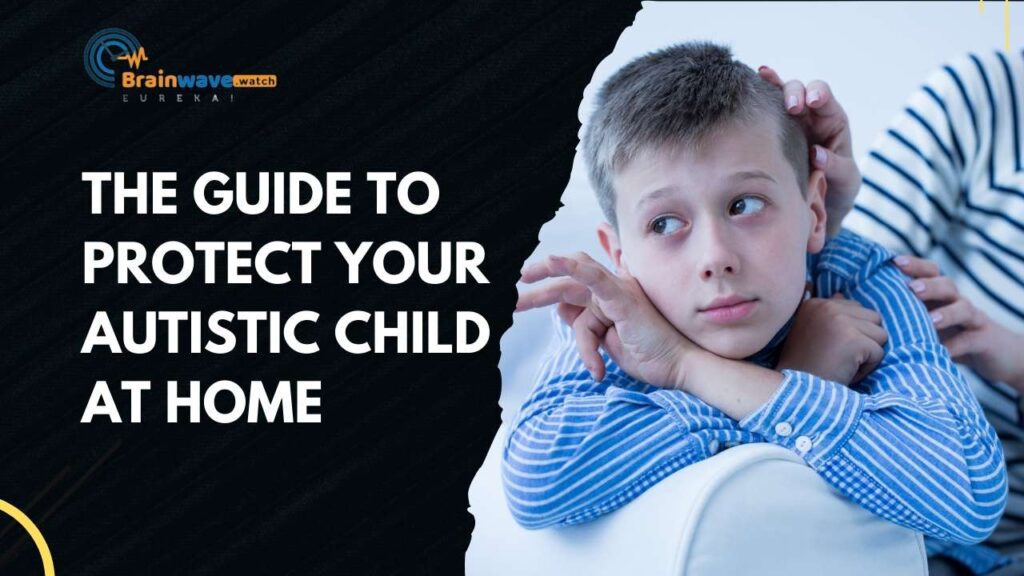Virtual Autism is a term that refers to a condition where young children, typically under the age of three, exhibit autism-like symptoms due to excessive screen exposure. This can include spending long periods lost in games and social media, avoiding family and homework responsibilities, and exhibiting anger when forced to disconnect from their screens.
According to Total Care ABA, virtual autism is not a distinct diagnosis but rather a unique approach to comprehending and supporting individuals on the autism spectrum. It is a condition that is believed to occur when young children are exposed to excessive screen exposure, leading to autistic-like symptoms.
Differences Between Virtual and Classic Autism
While virtual autism shares some similarities with classic autism, there are also some key differences between the two conditions. For example, children with classic autism may have difficulty communicating and interacting with others or understanding social cues. In contrast, children with virtual autism may exhibit these symptoms due to excessive screen exposure rather than inherent neurodivergence.
It is important to note that virtual autism is not a substitute for classic autism, and it is not a condition that can be diagnosed on its own. Rather, it is a term used to describe a specific set of symptoms that can occur as a result of excessive screen exposure.
Identifying Virtual Autism
Virtual autism is a condition that is believed to occur when young children are exposed to excessive screen exposure. This happens when screen viewing for too long a time causes autistic-like symptoms. In this section, we will explore the signs and symptoms of virtual autism and the diagnosis criteria for this condition.
Signs and Symptoms
Virtual autism is signified by the manifestation of autism-like symptoms in children. According to Spectrum Disorder, some of the signs and symptoms of virtual autism include:
- Sensory deprivation
- Motor deprivation
- Social skill deprivation
- Delayed language development
- Impaired social interaction
- Repetitive behavior
Children with virtual autism may also exhibit excessive gaming or social media use, avoidance of family and homework responsibilities, and anger when forced to disconnect from their screens.
Diagnosis Criteria
Diagnosing virtual autism can be challenging as it is a relatively new concept. However, according to Autism Advance, some of the diagnosis criteria for virtual autism include:
- Children under the age of three have more than four hours of screen exposure per day.
- Sensory, motor, and social skill deprivations similar to those found in children with Autism Spectrum Disorder (ASD).
- Symptoms that improve when screen time is limited or eliminated.
It is important to note that virtual autism is not a recognized medical condition, and more research is needed to fully understand this phenomenon. If you suspect that your child may have virtual autism, it is important to seek the advice of a qualified healthcare professional.
Strategies for Managing Virtual Autism
Children with virtual autism may struggle with communication and social skills and may have difficulty regulating their emotions. However, with the right strategies in place, parents and caregivers can help their children manage their virtual autism symptoms and improve their quality of life.
Communication Techniques
Effective communication is key to helping children with virtual autism. Here are some communication techniques that may help:
- Visual aids: Children with virtual autism may benefit from visual aids such as picture schedules, social stories, and visual timers. These can help them understand what is expected of them, and can also reduce anxiety and stress.
- Clear instructions: Children with virtual autism may struggle with understanding and following complex instructions. It is important to give clear and concise instructions and to break tasks down into smaller steps.
- Positive reinforcement: Positive reinforcement can be a powerful tool for encouraging children with virtual autism to communicate. Praising them for their efforts, and rewarding their successes can help boost their confidence and motivation.
Behavioral Interventions
Behavioral interventions can also be effective in managing virtual autism symptoms. Here are some strategies that may help:
- Structured routines: Children with virtual autism may benefit from structured routines and predictable schedules. This can help reduce anxiety and stress, and can also improve their ability to focus and engage in activities.
- Sensory integration: Children with virtual autism may be hypersensitive or hypersensitive to sensory input. Sensory integration techniques such as deep pressure massage, weighted blankets, and sensory toys can help regulate their sensory systems and improve their ability to focus and engage in activities.
- Positive behavior support: Positive behavior support is a proactive approach to managing challenging behaviors. This involves identifying the underlying causes of the behavior and developing strategies to address those causes. Positive behavior support can help reduce stress and anxiety, and can also improve the child’s overall quality of life.
By using these communication techniques and behavioral interventions, parents and caregivers can help children with virtual autism manage their symptoms and improve their quality of life.
Support and Resources For Virtual Autism
Dealing with virtual autism can be challenging for both the child and the parents. Fortunately, there are many resources available to help families cope with this condition. Here are some of the resources that parents can use to support their child:
Educational Support
Many schools and educational institutions offer programs and resources for children with virtual autism. These programs are designed to help children develop social and communication skills, as well as improve their academic performance. Parents can work with teachers and school administrators to create an individualized education plan (IEP) for their children that addresses their specific needs.
Online Communities and Forums
Online communities and forums can be a great resource for parents of children with virtual autism. These communities provide a space for parents to connect with other parents who are dealing with similar challenges. Parents can share their experiences, ask for advice, and find support from others who understand what they are going through.
Some of the popular online communities and forums for parents of children with virtual autism include:
These communities can also be a great resource for finding information about local support groups, therapists, and other resources in your area.
Future Perspectives
As the use of virtual reality (VR) becomes more widespread, experts predict that it will play an increasingly important role in the diagnosis and treatment of autism spectrum disorder (ASD). Researchers are exploring the use of VR to help individuals with ASD develop social skills, manage anxiety, and improve communication. VR can provide a safe and controlled environment for individuals to practice social interactions and communication skills, without the pressure of real-life situations.
In addition, researchers are using VR to better understand the sensory processing differences in individuals with ASD. By creating virtual environments that mimic real-life situations, researchers can study how individuals with ASD react to different stimuli and develop more effective treatments.
Advocacy and Awareness
As the understanding of virtual autism continues to evolve, people must become more aware of the risks associated with excessive screen time for young children. Parents, educators, and healthcare professionals should work together to promote healthy screen habits and limit screen time for young children.
In addition, advocates can work to increase awareness of the benefits of VR for individuals with ASD. By educating the public about the potential of VR to improve social skills, communication, and anxiety management, more individuals with ASD may be able to access this technology and benefit from its use.







